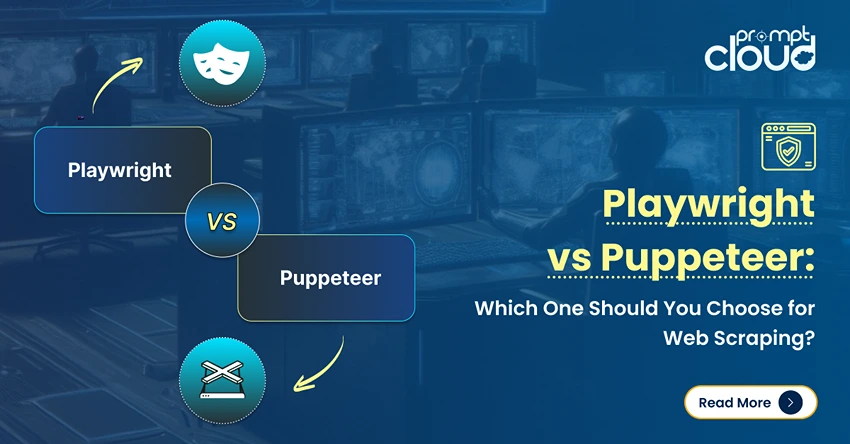
Building a powerful and scalable web scraping infrastructure requires a sophisticated system and meticulous planning. First, you need to get a team of experienced developers, then you need to set up the infrastructure. Finally, you need a rigorous round of testing before you are good to start data extraction. However one of the most difficult parts remains the scraping infrastructure. If not well thought about beforehand, it can lead to multiple problems and also cause legal issues that may go out of hand.
Hence, today we will be discussing some critical components of a robust and well-planned web scraping infrastructure.
Auto-scraping spiders
When scraping websites, especially in bulk, you need some sort of automated scripts ( usually called spiders) that need to be set up. These spiders should be able to create multiple threads and act independently so that they can crawl multiple web pages at a time. Let me give you an example. Say you want to crawl data from an e-commerce website called zuba.com. Now let’s say Zuba has multiple subcategories such as books, clothes, watches, and mobile phones.
So once you reach the root website, (which can be www.zuba.com), you would like to create 4 different spiders (one for webpages starting with www.zuba.com/books, one for those starting with www.zuba.com/fashion and so on). This way, although you start with a single spider, they divide into four separate ones on the categories page. They may multiply more in case there are subcategories under each category.
These spiders can crawl data individually and in case one of them crashes due to an uncaught exception, you can resume it individually without interrupting all the other ones. The creation of spiders would also help you to crawl data at fixed time intervals so that your data is always refreshed. You can also set your spiders to run at a specific date and time depending on your requirements.
Data validation and quality control
Web scraping does not mean “gathering and dumping” of data. You should have validations and checks in place to make sure that dirty data does not end up in your datasets rendering them useless. In case you are scraping data to fill up specific data-points, you must be having constraints for each data point. Say for phone-numbers, you can check if they are a specific number of digits and contain only numbers. For names, you can check if they consist of one or more words and are separated by spaces. In this way, you can make sure that dirty or corrupt data do not creep into your data-columns.
Before you go about finalizing your web scraping framework, you should put in considerable research to check which one provides the maximum data accuracy since that will lead to better results and less need for manual intervention in the long run.
One of the most common complaints in scraped datasets is the abundance of duplicate data. A duplicate data check is a must if you are scraping vast amounts of data. This will not only keep your data-set clean but also reduce your storage requirements, thereby reducing cost.
A more difficult but effective way to keep your scraped data clean and correct is to crawl data from multiple sources and cross-check them against each other. This can take more time and may also be difficult to set up for every single data-set that you are populating, but it is proven to be the most effective setup for clean web scraping.
Scalable server for web scraping infrastructure
When we talk about running spiders and automated scripts, we usually mean that the code would be deployed in a cloud-based server. One of the most commonly used and cheap solutions is AWS-EC2 by Amazon. It helps you run code on a Linux or a Windows server which is managed and maintained by their team at AWS.
There are 275 different instances that you can choose from depending on the type of OS you need, how managed you would like your server to be, and what sort of CPU and RAM it will be using. You are charged only for the uptime and you can stop your server in case you plan not to use it for some time.
Setting up your scraping infrastructure on the cloud can prove to be very cheap and effective in the long run, but you will require cloud architects to set things up and take care of upgrading them or making changes to them as and when required.
Web scraping infrastructure to store and expose data
When we talk about web scraping, we usually think of the infrastructure and code required to extract the data, but what is the use of extracting the data if we do not store it in a format and location from which it can be accessed and used with ease. In case you are scraping high-res data such as images or videos which run into GBs, you can try AWS-S3, which is the cheapest data-storage solution on the market today.
There are more expensive solutions that you can choose depending on how frequently you want to access the data. In case you are extracting specific data-points, you can store the data in a database such as Postgres in AWS-RDS. You can then expose the data using APIs which can be plugged into your business processes based on requirements.
Proxy management and IP rotation
When scraping a single webpage, you can run the script from your laptop and get the job done. But in case you are trying to crawl data from thousands of web-pages of a single website every second, you will be blacklisted and blocked from the website in less than minutes. The website will block your IP and also stop displaying the CAPTCHA, in case you were auto-recognizing and filling the CAPTCHA. To rotate your IP you should use a VPN service or a Proxy service and set the frequency at which the IP should change and the list of the locations you would prefer your IP to be from.
User-agent is a tool that tells which browser you are using. It also contains other information such as the OS it is being run from, etc. If it remains the same for a long period, the website may recognize that you are trying to crawl data and may block you. Hence it is better that you keep rotating your user agent from time to time. You can create a list of user agents and randomly pick one after a fixed interval of time.
To prevent blacklisting, you can use a headless browser using tools like “Selenium”. One thing you must keep in mind is that running a headless browser is the same as visiting all the webpages using your browser except the fact that you won’t be seeing the pages visually. However, it will be resource-intensive and can slow down processes or cost you more when you are using cloud-architecture.
In short, companies try to find scraping bots through two things-
- Repetitive tasks from a single source.
- Sudden heavy traffic from a single source.
If you can take care of these, you will be safe.
Distributed web scraping infrastructure
In case you need to crawl data continuously to gather a live data feed from different sources, it is recommended that you set up separate servers and spiders for each source. This should be done for multiple reasons. In the case of a single server crashing, all your processes shouldn’t stop. It will also be easier to pinpoint the issue if you know which scraping process had the problem. Distributed scraping would also be faster and remove bottlenecks since one slow process wouldn’t slow another.
Ethical scraping
This component of web scraping infrastructure is more about the legal requirements. Scraping web data is not illegal but some ethical boundaries need to be followed for the benefit of all. You should always check the robot.txt file to see if a web-page has restricted web-scraping. You should never hit a website so frequently that it gets overburdened and crashes.
Also, in case you are logging into a website using some credentials before you crawl it, you should remember that logging in means that you are agreeing to certain terms and conditions. If those explicitly mention that you cannot crawl data then scraping data from pages inside the login-screen is illegal. Hence you should be configuring your scraping engine and your spiders to conform to laws and regulations of your region.
Conclusion
Setting up and maintaining web scraping infrastructure is a complex process and that is the reason why many companies prefer to outsource their web scraping tasks to companies like us. Our team at PromptCloud helps companies get data at the click of a button. You provide us with the requirements, we give you the data in the format you want and in the delivery method of your choice.



















